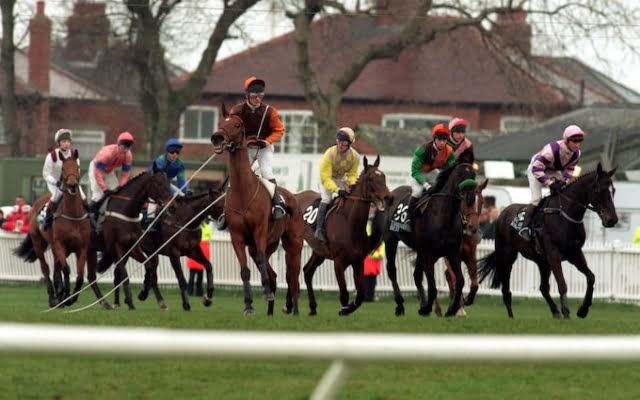 Starter feed around Richard Dunwoody and Won't Be Gone Long By: EMPICS Sport/Ross Kinnaird
Starter feed around Richard Dunwoody and Won't Be Gone Long By: EMPICS Sport/Ross Kinnaird
Happened thirty years ago one of the greatest British sports defeats of all time; cancellation of the Grand National after two false starts.
Nine of the 39 runners were left stranded at the start, some entangled in the elastic starter tape, 14 made it to the second lap and seven horses led home from Esha Ness, completed the course that became known as «the race that never happened».
Marcus Armitage, who two weeks later joined Telegraph Sport as one of its race correspondents, raced on Travel Over.
< p> The starter, Captain Keith Brown, said afterwards: “Everything that could go wrong happened.
As you can see in the YouTube video below, a lot went wrong that day; an outdated trigger with a weathered elastic band stretching the width of the track, which itself was an accident waiting in the wings.
In addition, the long delay was caused by 15 animal rights activists being forcibly removed from the track, and then there was the reluctance of some horses to line up, further delaying the second start, while other agitated horses and jockeys tried to preempt the start. to ensure a clean run to the first.
Then, amidst the chaos of 39 horses riding in all directions, the semaphore failed; the red flag of the starting lineup did not unfurl, and the flagship hurriedly left the line of fire in the face of 30 horses rushing towards it.
If even one of them had worked properly, Aintri would have gotten away with it. But if there was something that made all the problems worse, it was something that no one could control; gods of sports weather that day.
Of course, the «Rashomon effect» is that if you have four witnesses, you get four different versions of events. Here we had 39, but this is mine.
It was cold, spring turned into winter, and a damp and windy wind blew from the Irish Sea. I always tell my kids that there's no such thing as cold, only the wrong clothes and, oh my god, almost sheer nylon breeches, paper-thin boots, a pair of women's tights, and a set of light silk, like a T-shirt for the Arctic — that's my main memory of that day. .
Aside from the anticipation of the challenge of cleaning up national landmarks such as Becher Creek, the Turn of the Canal, Valentine and the Chair, and the opportunity to win the greatest race of all, the first thing I wanted to do was to warm up after the endless 20-minute delay before the race, and since my 26 weigh-in colleagues also gained 102 pounds or less and spent most of the morning in the sauna, I was not alone in shivering from the cold. .
Then I was crazy about National and Aintree. Winning it in 1990 on Mr. Frisk did not quite satisfy my desire, if not to win it again, then at least to participate in it every year and get a huge buzz associated with participation.
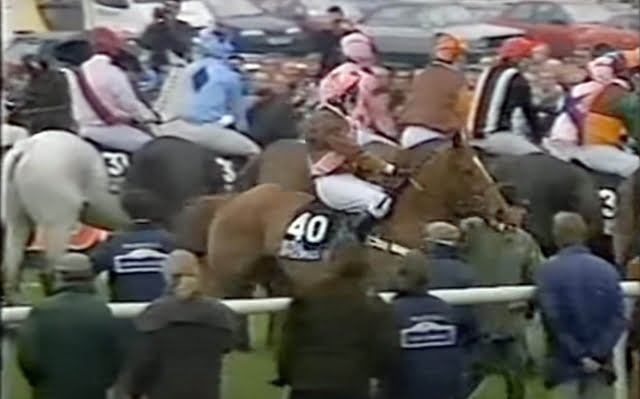 Telegraph Sport's Marcus Armitage lines up for Travel Over (red cap, black and white silks)
Telegraph Sport's Marcus Armitage lines up for Travel Over (red cap, black and white silks)
With nothing obvious for me to ride, I called Richard Lee about two weeks before the race, in case he needed a Travel Over jockey, a large black 12-year-old gelding owned by William Haggas' mother, Christina Feather. whose silks were brought by the Silver Buck in 1982 to the success of the Golden Cup.
He had a 100-1 chance and the first time I saw him was in the National Championship paddock. Size alone doesn't guarantee a horse will jump around Aintree, but at least she could see through the first one when I showed her that, which helps a lot.
Once that formality was done, we we circled for a long time at the beginning, getting colder, waiting, as it turned out, for the protesters to be removed from under the first fence.
The wind meant you couldn't hear Captain Brown or the crowd, and we were all on tape. I can still see in my mind's eye that closer to the inside, from behind the line of the horses' noses, one poked its head out and stuck its nose out just as the ribbons flew up for the first time, snagging and tearing the elastic band that also went in. several other places. Although I let the Travel Over gallop down to the first fence with a few others, just to warm us up, I never saw the flagship, but we immediately knew it was a false start.
The entry has been re-installed. but, on sinister reflection, this time they tied together where they had broken. There was no replacement tape. We were all too close to it, ready to go again, but in particular Chatham refused to queue up or even turn to face the right direction, further delaying the start.
But then again, when the ribbons popped out, another horse snagged on them with its nose. This time there was pandemonium. The tape wound around Travel Over's legs and around the neck of Richard Dunwoody of «Won't Be Gone Long» next to me. As I moved, the noose tightened around Dunwoody's neck. Like it or not, we weren't so much stuck at the start line, we were chained to it and to each other.
I'm no expert on body language, but when 30 others set off, I could see their jockeys. I'm not sure that anything, any flag or anyone would have stopped them. Instinct told me that they would not come back, and therefore, unraveling, I went after them, jumped first, not very well, a little behind them. Useless. I picked up Travel Over and that's it.
I was a little offended that I didn't enjoy the fair and if they race again my horse, who by this point is also lame, will be considered the starter so for several reasons can't enter what seemed like the most likely from events; National with nine horses. After the unfortunate consequences, when the mood ran high — I missed a lot because I had to prepare for the next race — I also thought that there was an equal chance that the stewards might well reverse the decision to annul the race.
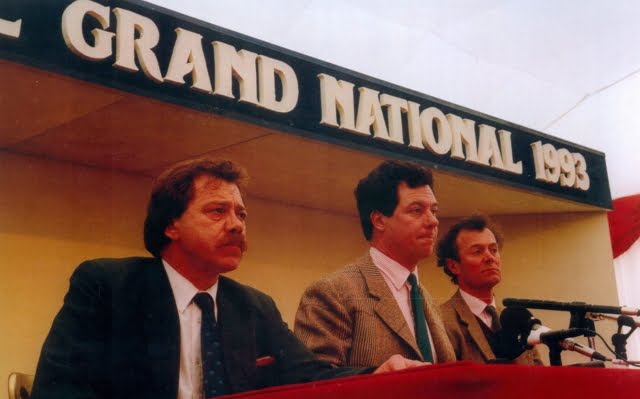 Aintree officials explain their decision to invalidate the result. Photo: Shutterstock/Paul Lewis
Aintree officials explain their decision to invalidate the result. Photo: Shutterstock/Paul Lewis
At the time, I don't think any of us knew that we were in such a historic non-race, the 147th and only invalid National. I was sorry that Captain Keith Brown and Ken Evans were to blame. Keith was a good starter and a nice person. I liked Ken too. He subsequently occupied the door to the press room in Chester, so I chatted with him, but I always felt that the 1993 National was the elephant in the room.
 Keith Brown collided with runners after an annulled race. Photo: PA/John Stillwell
Keith Brown collided with runners after an annulled race. Photo: PA/John Stillwell
After that, the starting procedures have become much more professional — although it is still not a real National without one false start. My turn was in 1990 and I often wondered how I would feel if it happened three years earlier, so I felt terrible for everyone, owners, trainers and jockeys who may have missed their unique opportunity to win the race, but too many stopped after the lap to say with certainty that Esha Ness would have won anyway.
At the time, it could have been a serious mistake that the bookmakers had to return £75 million in bets, but three decades later, this is just another dramatic chapter in the colorful history of the world's greatest race. And, of course, Aintree, the National, the Jockey Club, and the sport redeemed themselves four years later, against all odds, by turning on the National Bomb Defense Program.
Carl Llewelyn After winning jockey in 1998 at Earth Summit and 1992 at Party Politics, he returned to the 18.2-handed giant who was a 6-1 favorite to repeat
“When Party politics won him a year earlier, he began to gurgle after the circuit. This year he had a tube [surgery to help the horses breathe]. He was in much better shape, and — except for accidents or setbacks — I was as confident as one can be in such a race.
“He was running away with the track, but after the jump into the water, I saw his coach waving his arms and yelling for him to stop. Before that, I had no idea that this was a void race, but I knew and trusted him. In a race like this, you don't know if there are 30 or 40 horses running — you just know there are a lot of horses.
“It was difficult to cope with a stop halfway through the world's biggest race. Is that the one that left? Probably, yes, he would have been very battered. ”
Jaroslav «Chiko» BrechkaThe Czech jockey who rode last year's winner Velka Pardubice Quirinus, sometimes still races, but the seven-time coach-champion of Slovakia
“Coming to the National was a big event in my life. Can't say how exciting. Every day, even now, my heart and my head are connected with British horse racing. It took two and a half days to transport the horse across Europe. After one lap, I jumped into the water and saw the flagship, so I stopped.
“After that they wrote a letter asking to return next year, but in 1994 it was very soft, Quirinus jumped too hard and fell on The Chair. I am now 57 years old and still looking for a horse to bring back to the Nationals.”
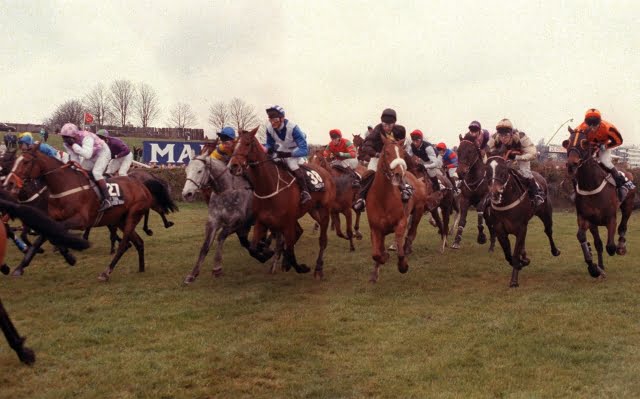 Horses run free after a false start in 1993. Photo: Mirrorpix/Walker/Mealey/Cooper Norman Williamson is 4th on the Committee and now sells horses flat
Horses run free after a false start in 1993. Photo: Mirrorpix/Walker/Mealey/Cooper Norman Williamson is 4th on the Committee and now sells horses flat
“After the lap there was a picture of a jockey looking back at a man waving a flag, and that jockey is me. But I didn't remember it. I remember going down to an open ditch [19th] and someone told Charlie Swan [at Cacherwillahow] that they thought it would be invalid and he said, 'I'm going to go on, this guy will never jumps better. This conversation really happened! It would be a brave man to drive up.
“There was always the possibility that they would say they weren’t, and we were all consumed by the lust to win the national. There is always a lot of crowd noise and you can't tell if they are cheering you on or yelling at you to stop.
“It's hard to describe how you feel in a race like the National. The best way to describe it is if a footballer is faced with an open net but thinks he is offside, he will still keep playing, scoring the net and hoping until the whistle blows.»
John White «winner» Esha Ness now has 'a few horses' in Ireland
«It was all chaos and the delay due to animal rights protesters didn't help. I don't remember much about it, but my English teacher telling us that an empty vessel makes the most noise comes to mind.
“When I came in after that, John Buckingham, my valet [who famously won the race 100-1 with a Foinavon shot in 1967] insisted that I weigh in because there was a feeling they might reverse the decision to cancellation. Nobody understood and many people cried. I think Esha Ness would have won, if it was a normal national tournament, he would have easily won. Is that the one that left? Yes, but it wasn't my fault. But there are worse things, in the end it's just jumping around the field.»
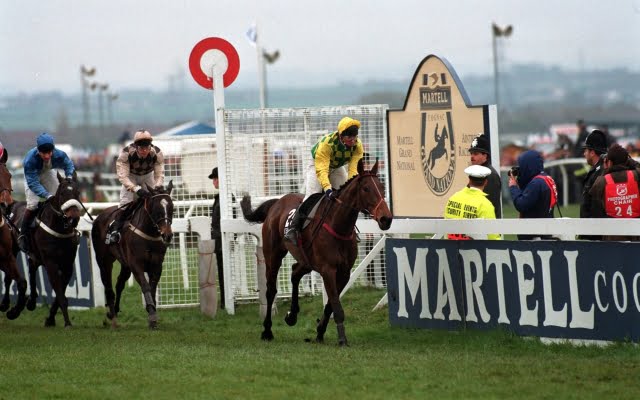 John White aboard Asha Ness crosses the payline at 'first' Photo: Getty Images/Popperfoto Andy Orkney Ryder of Howe Street dropped in 20th but still ahead. Currently working as an optometrist in Leyburn, North Yorkshire.
John White aboard Asha Ness crosses the payline at 'first' Photo: Getty Images/Popperfoto Andy Orkney Ryder of Howe Street dropped in 20th but still ahead. Currently working as an optometrist in Leyburn, North Yorkshire.
“The line to drive down Howe Street was not too long. He was a two-mile runner and actually had to run two races. He was furious when he fell on the 20th. I couldn't hold him — he flew around six in the air on Becher's first time, hit the front and was unstoppable — even if I wanted to. I saw the pillars in front of The Chair and thought, «What's going on here?» but assumed it was animal rights.
“On TV, you can see us walking past a lot of horses roaming around, but you're so focused that you don't see them. The first time I realized it was empty was when, after the fall, I got into the car driven by Ron Barry and heard Peter Bromley on the radio. I asked Ron, «What do they mean?» and he said that half of them hadn't started yet. I had to do something on ITV the next day and I thought that everyone would be sitting in court in black caps because I was in front, but everyone was very kind to it!”
Richard Dunwoody Rider of Won&# 39; t Be Gone Long, won jockey in 1986 and 1994, now a photographer from Spain
“It was not the National, which I was most looking forward to. Won't Be Gone Long gave me one of the best spins I ever did at the 1990 Topham circuit, but he lost once and lost confidence after that. I couldn't teach him last weekend because I had a broken arm, but he sent Martin Lynch, who replaced me, to the hospital, so it wasn't promising.
“The first time we all knew it was a false start, the second time the tape wound around my neck and on the legs of the horse next to me. Each time he took a step forward, the elastic got tighter. It was made to be a little more dramatic than it actually was, I was never in danger of being strangled!
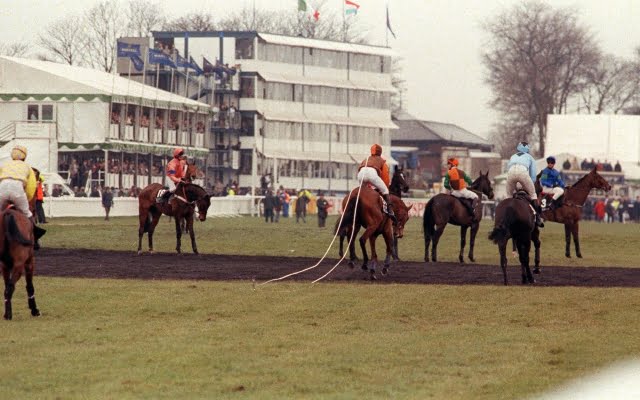 Richard Dunwoody drives a Won't Be Gone Long car with a starter tape around his neck. Photo: Mirrorpic/Walker/Mealey/Cooper
Richard Dunwoody drives a Won't Be Gone Long car with a starter tape around his neck. Photo: Mirrorpic/Walker/Mealey/Cooper
“I went to try and help stop those who were still going after the lap and then put on [owner] Robert Whaley-Cohen’s coat, which was five sizes too big than we were waiting for a rerun that never happened. There was always a story that one jockey turned to one of the Irish guys after a lap saying «I think we should pull up» and the other one said «I'm too good for that». /p>
“I think Keith Brown had to carry the can, it was pretty rude – he obviously waved his flag, he just didn’t turn around. I filmed it and on Sunday morning a few friends came up to us and we rolled on the floor from all this comedy. Of course, at the time it was serious, but now it is part of the history of the Grand National.
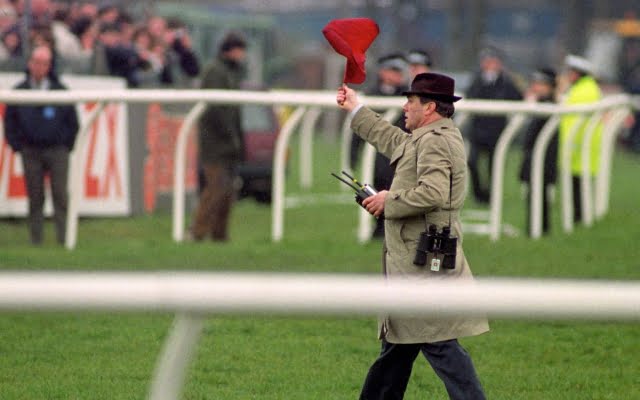 Ken Evans tries to signal a second false start by waving a red flag. Flat Coach
Ken Evans tries to signal a second false start by waving a red flag. Flat Coach
“Hidden talent was a huge horse board that fell over the fence in Topham last year. I think I tried to climb anything but him, so I wasn't one of the most disappointed because I didn't jump anything. I was a little excited when they talked about running again with just nine runners.
“I thought maybe I could get it transported, especially since there were a few holes in the fences, and I looked at others who couldn’t start [at least 28-1] and thought that I will beat them. So I went from being uninspired to this, but it didn't happen.
“When Keith Brown walked in, he looked like a man about to be shot—I felt really sorry for him, he was such a sweet man and a very good starter. At that time, I had to play the role of «disembowelled», but in reality it was not.

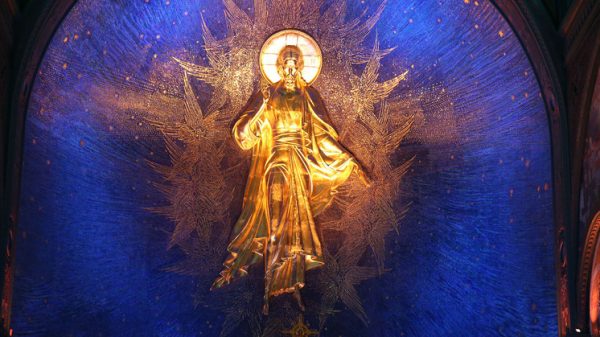
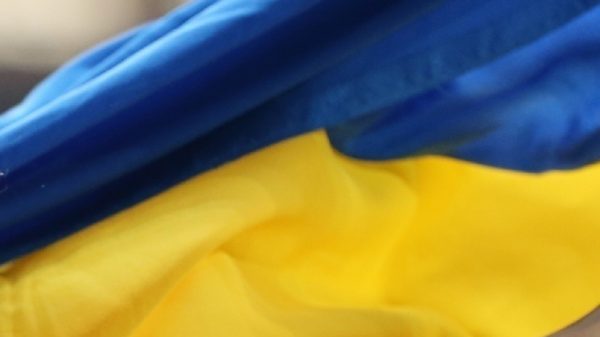
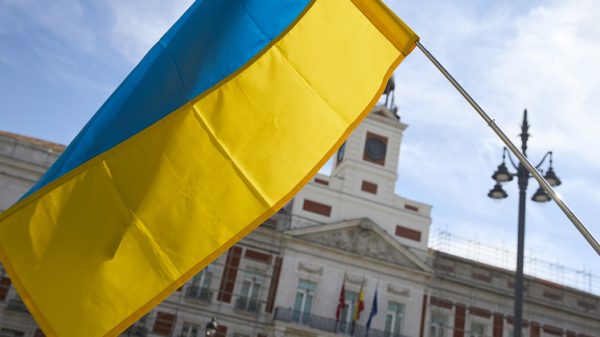
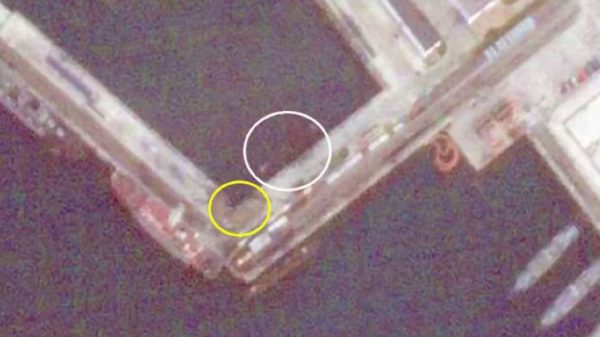
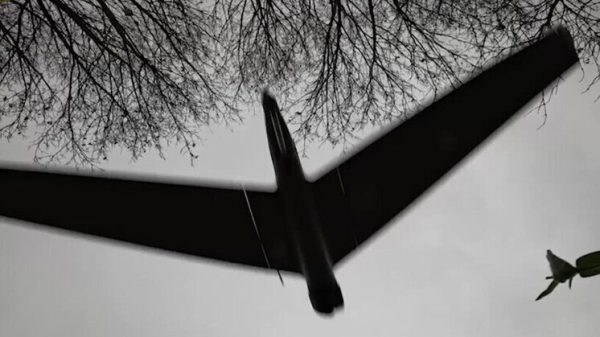

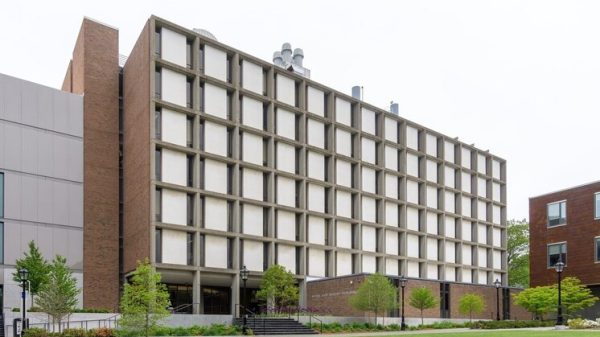


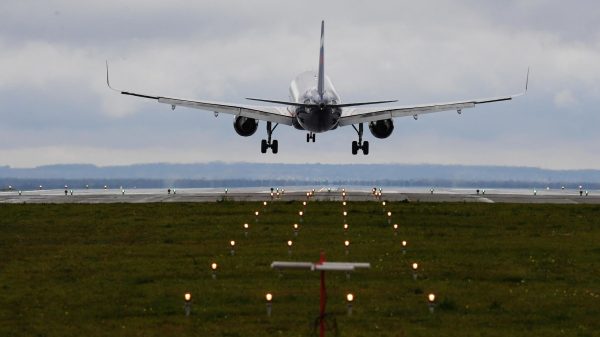
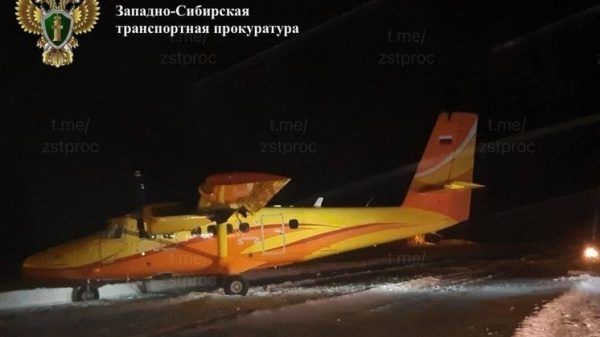
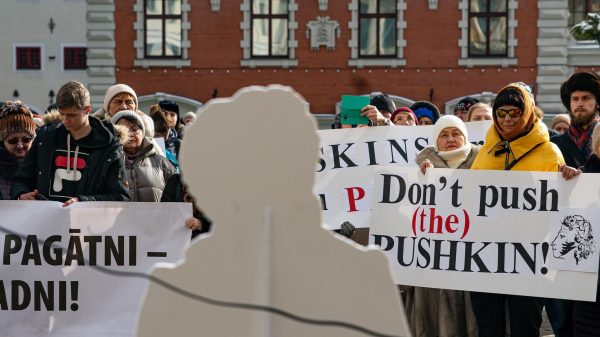
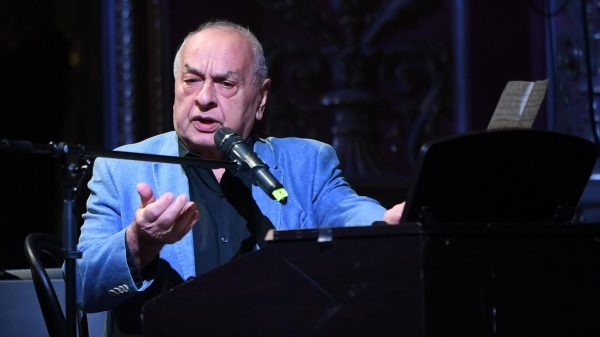
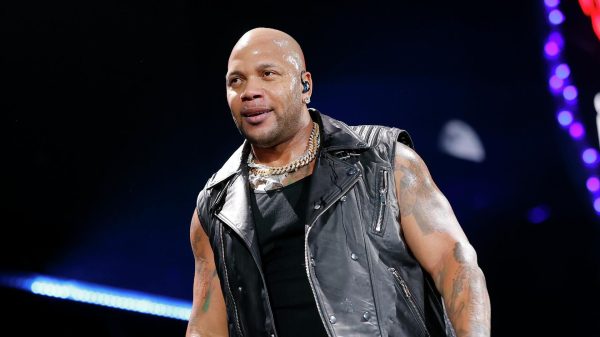
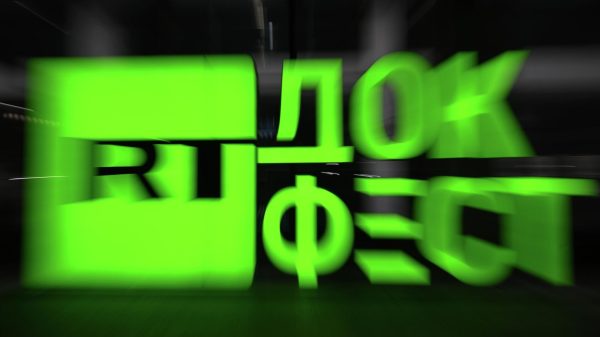
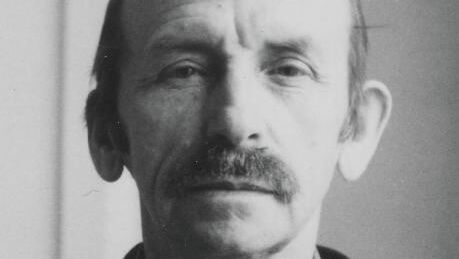














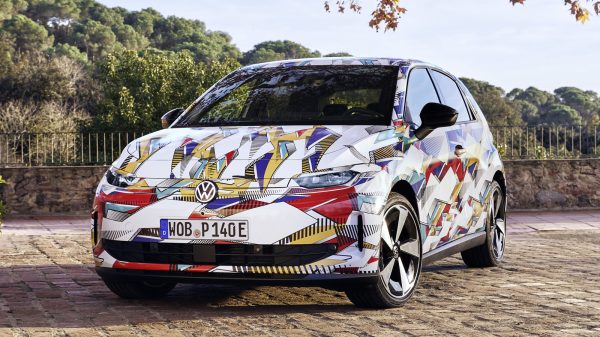





















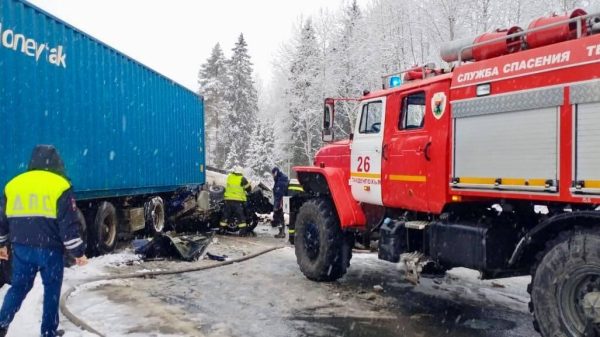
Свежие комментарии